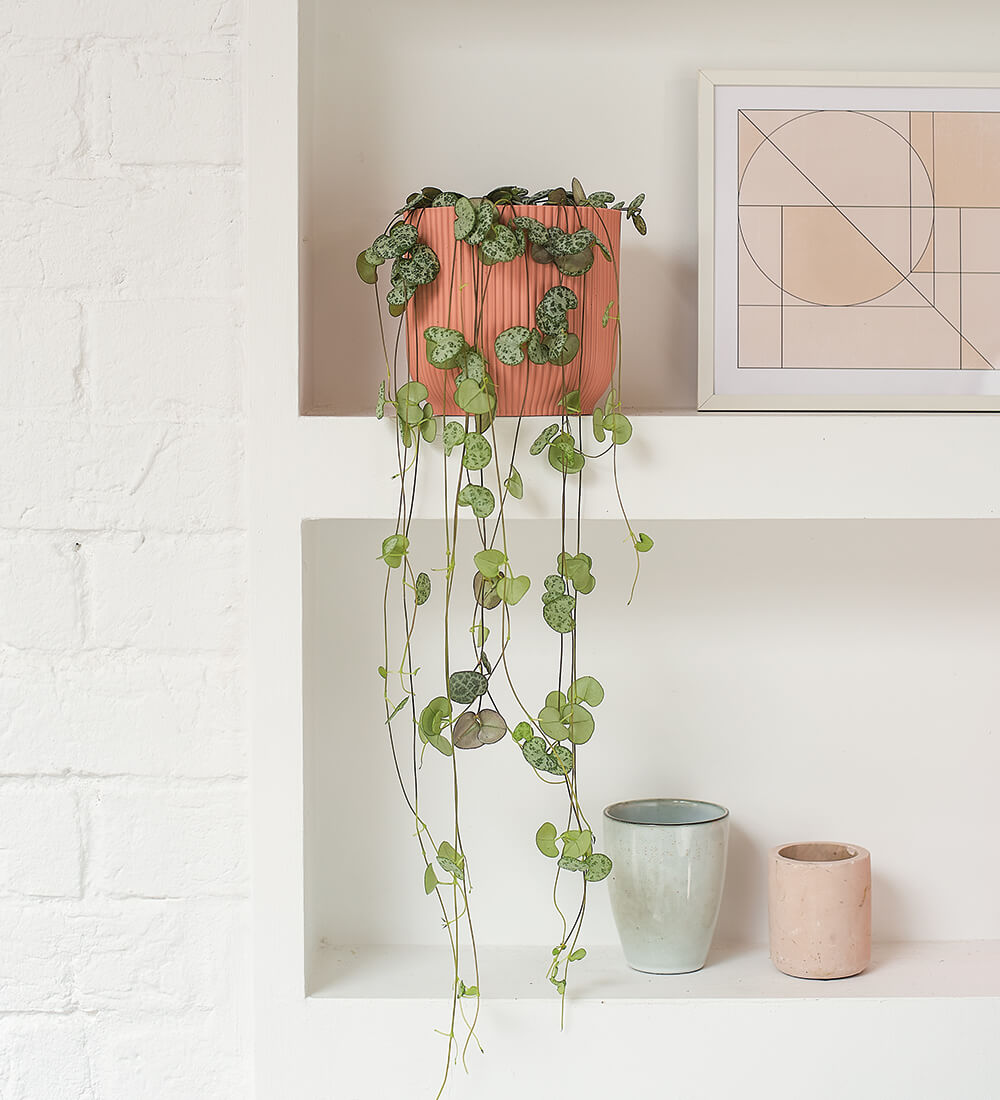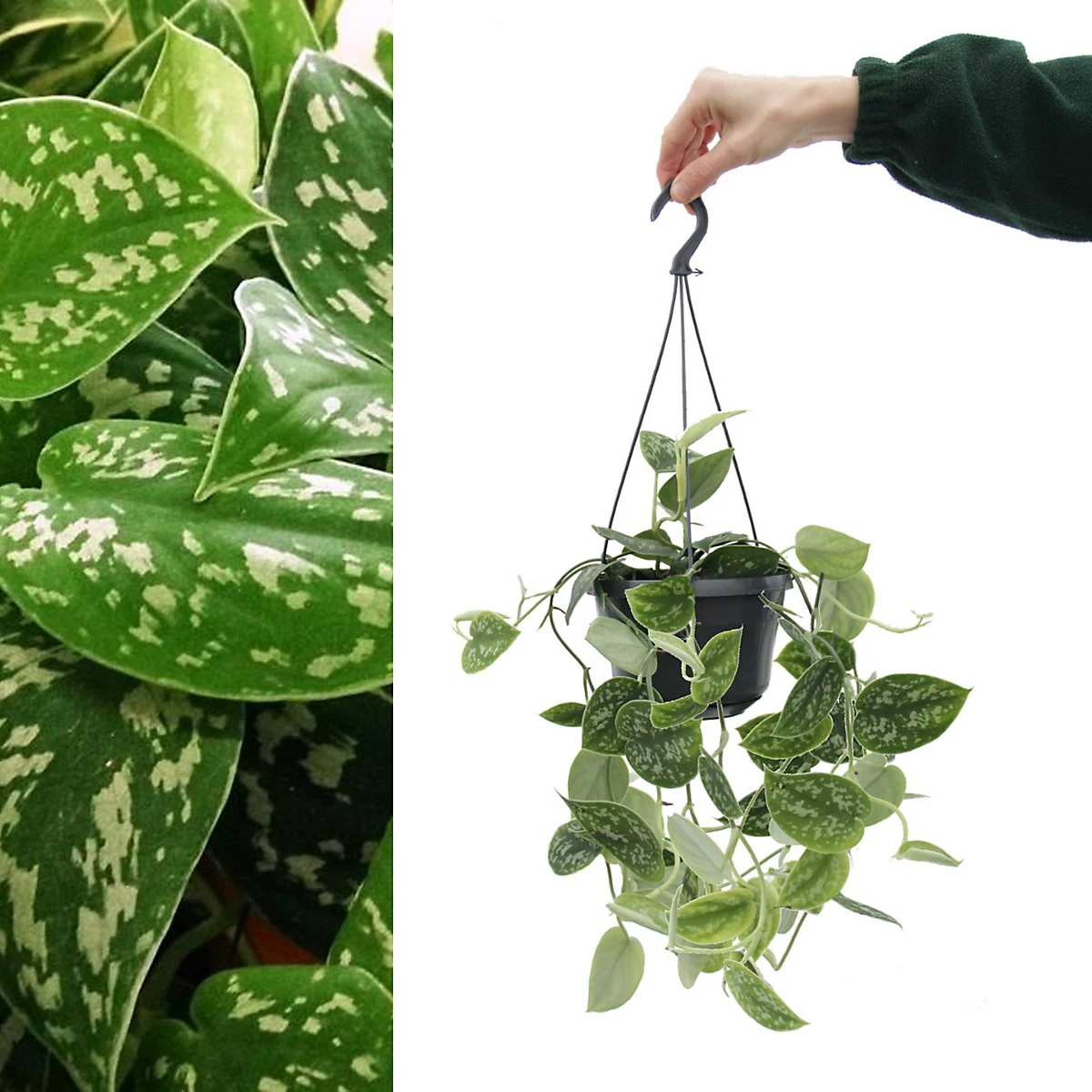Bringing greenery into your home doesn’t always mean filling your floors or tabletops — hanging plants let you use the vertical space to create lush, cascading displays that add life and depth to every room. Whether you’re dealing with a tiny apartment, a bright living room, or a cozy bathroom, there are plenty of trailing houseplants that thrive in hanging baskets while being relatively low-maintenance.
Drawing from expert insights, here are 11 of the best indoor hanging plants, along with their care needs and what makes them uniquely beautiful.
1. Pothos (Epipremnum aureum)

Often called “devil’s ivy,” pothos is one of the most forgiving and versatile trailing plants. It tolerates low light and even fluorescent lighting, making it ideal for beginners or dimmer corners.
- Light: Bright, indirect light is ideal, but low light works too.
- Water: Water when the top inch of soil dries out.
- Why hang: Its aerial roots and long vines drape beautifully from hanging baskets, adding greenery without taking up floor space.
- Bonus: Pothos is known for improving indoor air quality.
2. Heartleaf Philodendron (Philodendron hederaceum)

This classic vining plant has heart-shaped leaves and a trailing habit that makes it perfect for hanging. It thrives in a variety of lighting conditions and is very easy to care for.
- Light: Low to bright, indirect.
- Water: Let the top 1″ of soil dry out before watering.
- Humidity: Tolerant of lower humidity, though it thrives in more humid conditions.
- Toxicity: Be cautious — philodendron leaves can be toxic if ingested.
3. Spider Plant (Chlorophytum comosum)

A longtime favorite, spider plants are super beginner-friendly, and their “babies” (spiderettes) hang down beautifully. They work wonderfully in hanging baskets.
- Light: Bright to moderate indirect light.
- Water: Keep soil lightly moist, but let it dry out a bit between waterings.
- Humidity: Does well in typical indoor humidity.
- Benefits: Aside from being easy to grow, spider plants help purify the air.
4. Burro’s Tail (Sedum morganianum)

This succulent stands out with its ropy, trailing stems covered in plump leaves that almost look like drops. It is delicate — the leaves can fall off easily, so hang it somewhere safe.
- Light: Prefers bright to full sun (but gradually acclimate to avoid leaf burn).
- Water: Extremely drought-tolerant. Allow the soil to dry completely between watering to avoid root rot.
- Humidity: Average indoor humidity is fine.
- Note: Because of its weight and fragility, choose a sturdy hanging pot and a secure hook.
5. String of Hearts (Ceropegia woodii)

With its delicate, heart-shaped leaves and long, trailing vines, the string of hearts makes a charming hanging plant. Country Living notes that mature vines can reach up to 12 feet long.
- Light: Bright, indirect light.
- Water: Let the soil dry out between waterings.
- Humidity: Prefers moderate humidity (~40–50%).
- Care tip: If you’re not seeing flowers, try positioning it slightly brighter — it may trigger its small tubular blooms.
6. String of Pearls (Senecio rowleyanus)

This one’s a showstopper: bead-like leaves trail like a green necklace. They store water in these round leaves, making them drought-tolerant.
- Light: Bright, indirect light works best.
- Water: Water sparingly and let the soil dry out completely — overwatering can be fatal.
- Toxicity: All parts are toxic to pets and humans; keep them out of reach.
- Why hang: Its long, trailing stems make a beautiful, elegant drape in a hanging pot.
7. Satin Pothos (Scindapsus pictus)

A more refined cousin of the pothos, the satin pothos brings a touch of silver to its dark leaves.
- Light: Medium to bright, indirect light.
- Water: Let the soil dry slightly between waterings.
- Humidity: Prefers moderate humidity.
- Use case: A great statement trailing plant without the need for constant care.
8. Wax Plant / Hoya (Hoya carnosa)

Known for its thick, waxy leaves and fragrant star-shaped flowers, the Hoya is a trailing succulent-like plant that thrives in a hanging basket. Country Living highlights its space-saving beauty and low watering needs.
- Light: Bright, indirect light is best.
- Water: Let the top few inches of soil dry before watering.
- Humidity: Prefers 50–60% relative humidity, though it tolerates slightly lower.
- Bonus: When it blooms, the fragrant flowers are truly charming and worth the effort.
9. Wandering Tradescantia (Tradescantia zebrina)

Also called “wandering dude,” this plant has vibrant, striped leaves that cascade beautifully. It’s a versatile, beginner-friendly hanging plant.
- Light: Moderate to bright indirect light — more light helps the stripes pop.
- Water: Allow the soil to get slightly dry, then water.
- Humidity: Average indoor humidity works fine, though it’ll appreciate a bit more.
- Why hang: With its fast growth and trailing stems, it quickly fills out a hanging basket.
10. Boston Fern (Nephrolepis exaltata)

A classic hanging fern, the Boston fern brings soft, feathery foliage to any space. It thrives in humidity and is especially suited for bathrooms or kitchens.
- Light: Bright indirect light works best.
- Water: Keep the soil evenly moist; don’t let it dry out.
- Humidity: High humidity is ideal — misting or a humidifier helps.
- Care: Because it can be fussy in dry air, pay special attention during heating seasons.
11. Staghorn Fern (Epiphytic Ferns)

Unique and sculptural, staghorn ferns can be mounted or hung in baskets. They need to be “soaked” periodically rather than watered like normal potted plants.
- Light: Bright, indirect light works best.
- Water: Soak the root ball every 10–15 days for about 10 minutes.
- Humidity: Prefers a higher humidity level; mist regularly if your home is dry.
Care Tips for Hanging Plants
To keep your trailing or hanging houseplants thriving, here are tried-and-tested care practices based on expert advice:
- Position matters: Choose a spot that gives each plant its ideal light. For example, succulents like Burro’s Tail and String of Pearls need brighter light, while Philodendron and Pothos are more tolerant of lower light.
- Water smart: Many hanging plants dry out faster, so check soil moisture regularly. Overwatering can be as harmful as underwatering — succulents like String of Pearls hate soggy soil.
- Manage humidity: Plants like ferns or Hoya benefit from higher humidity. Use a mister, humidifier, or even a pebble tray.
- Use proper hanging containers: Make sure the hooks or fixtures you use can safely support the plant’s mature weight — especially important for heavier species like Burro’s Tail.
- Watering without mess: Many plant owners will remove the pot to bring it to a sink or tub when watering.
- Fertilize sparingly: Most trailing plants don’t need heavy feeding; follow a mild schedule in the growing season.
- Keep plant health in check: Check regularly for pests, especially on succulents. Use insecticidal soap or rubbing alcohol if needed.
Why Hanging Plants Are a Game-Changer
- Maximize vertical space: Perfect for apartments or rooms with limited floor space.
- Add texture and depth: The trailing vines create a layered, living effect.
- Improve air quality: Plants like Pothos or Spider Plant help filter indoor air.
- Stylish & flexible: Whether you like succulents, ferns, or jungle vines, there’s a hanging plant to fit your aesthetic and lifestyle.
Conclusion
Hanging plants offer a beautiful, space-saving way to bring nature indoors — and with the right picks, they don’t have to be high-maintenance. From the forgiving pothos to the exotic staghorn fern, these 11 indoor trailing plants combine style and ease.
By pairing the right plant with the right spot and care practices, you’ll be well on your way to creating a lush, elegant vertical garden in your home.

